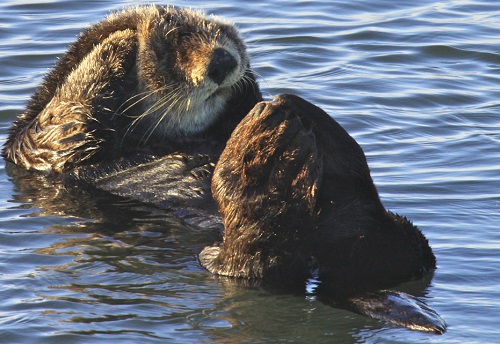 We know that recently a video became popular where a sea otter was startled while it was sleeping. While these videos may seem adorable or even harmless they actually present a real problem and set a bad example when it comes to how we interact with wildlife. Why is resting so important for otters?
We know that recently a video became popular where a sea otter was startled while it was sleeping. While these videos may seem adorable or even harmless they actually present a real problem and set a bad example when it comes to how we interact with wildlife. Why is resting so important for otters?

Not equipped with blubber like whales and seals, sea otters must rely on their fur coat and their super-high metabolic rate to stay warm. The average adult sea otter has to actively hunt and eat 20 to 30 percent of its body mass in food each day just to meet its energy requirements. That’s why it’s incredibly important for otters to conserve their energy – their survival depends on it – so they are often seen resting on their backs on the water’s surface.
We ask that you please adhere to the following guidelines for the safety of both people and southern sea otters:
- Sea otters can be found in nearshore areas along the California coastline, including areas of high human activity, such as harbors.
- Southern sea otters are listed as a threatened species under the Federal Endangered Species Act and are also protected under the Marine Mammal Protection Act, which prohibits harassing, hunting, capturing, or killing marine mammals. Approaching a sea otter so closely that it changes its behavior may constitute a violation of this law.
- Take caution in areas where sea otters are known to be present. Keep a safe distance from sea otters and other wildlife (if the otter notices you, you are likely too close and should back away). Kayakers should avoid disturbing resting sea otters by keeping a sufficient distance (at least 50 feet away is recommended), pass by parallel to the sea otters rather than pointing directly at them, and keep moving slowly but steadily past them.
- Keep pets on a leash on and around docks and harbors, and never allow interactions, even if the animals appear to be playing.
- Never feed sea otters or other wildlife. Wild animals that are fed can become aggressive.
The sea otter in the video is said to be located in Alaska, which is where 90% of the world’s sea otters live.
